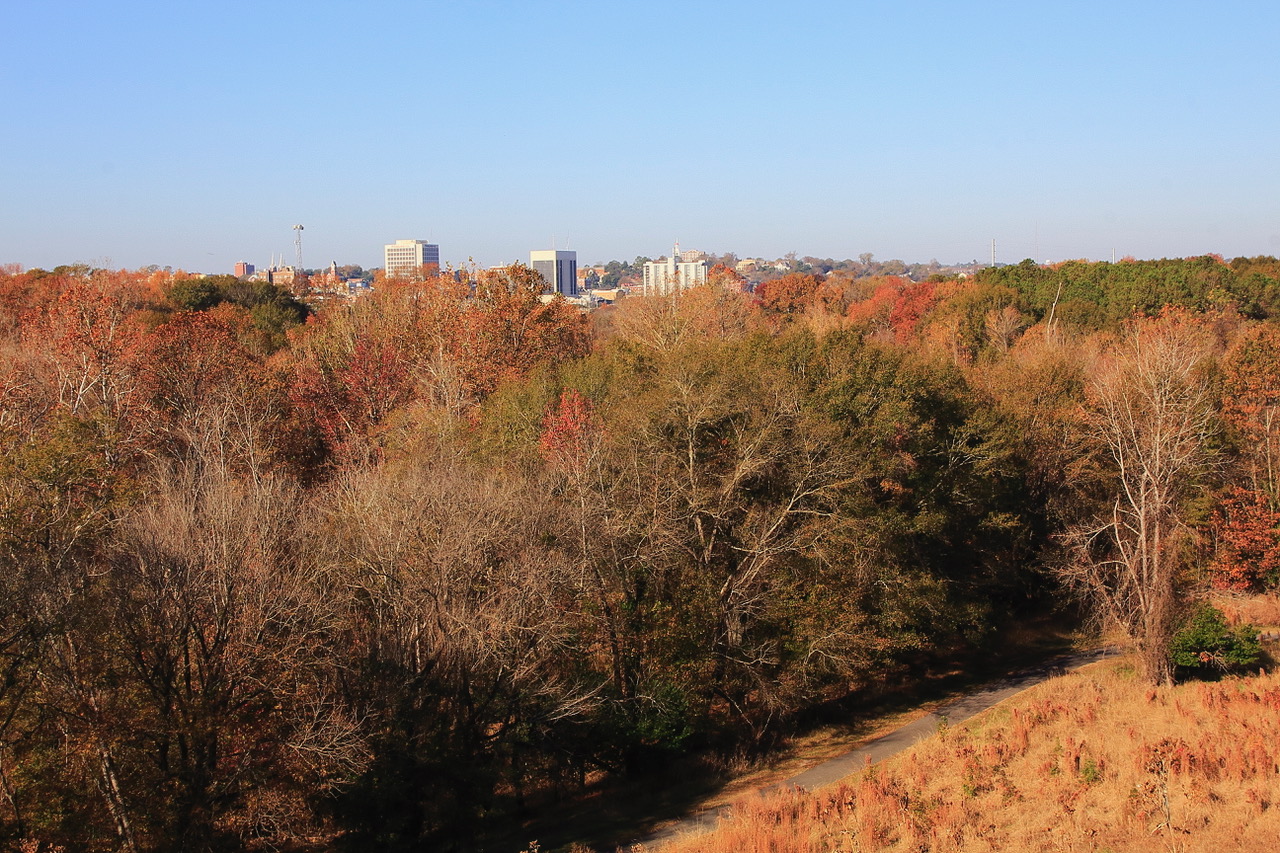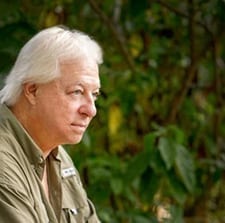One View, Two Civilizations
February 22, 2024By Tom Poland
On a November Saturday, I drove to the geographic heart of Georgia. The cool breath of autumn and a blue-sky day had pulled people outdoors. I rolled past yard sales and a classic car show into my first stop: Pioneer Day in Lincolnton, Georgia.
Pioneer Day took me back to log cabins, times when settlers and Indians battled. I saw no muskets or tomahawks but I spied a fellow in a coonskin hat. Just then the notes of a young woman playing dulcimore rang out. A band’s mountain music made an appropriate backdrop as the crowd milled about.
After visits with friends, I drove on to stop two: Dry Branch, Georgia, where I attended a Saturday night celebration. Yet again a band played mountain music. The next morning at stop three I visited the Ocmulgee Indian Mounds. Mississippian-era Indians who lived here in the 10th century CE (Cenozoic Era) built the mounds on a bluff overlooking the Ocmulgee River. Workers hauled 10 million baskets of dirt, about 60 pounds each, to build the 55-feet-tall mound. If you’ve not seen the marvelous vestiges of the mound builders’ civilization, you should. In the Art Moderne Visitors Center, built by the CCC and the WPA, you’ll see pottery, projectile points, effigies, and more. If claustrophobia isn’t a worry be sure to enter the Great Temple’s earthlodge.

The view from atop an ancient civilization’s Great Temple Mound.
A zigzagging wooden walkway took me to the top of the Great Temple Mound. From there I saw Macon. Among the places to visit in Macon are Capricorn Sound Studios, Rose Hill Cemetery, and the Allman Brothers Big House/museum. Why, I wondered, didn’t the Allman Brothers stage an album cover from atop the Great Temple Mound with Macon in the background?
Standing atop the mound looking over and beyond trees pale with color I saw microwave towers, concrete buildings, and an asphalt road. I heard trains rumbling through. An old railroad and Interstate 16, cut through the Ocmulgee Mound complex. The old gave way to the new. That seemed lost on the deer that viewed me as no danger. Tantalizingly close they came.
Back home it occurred to me that I’d seen two civilizations and wholesale change in one fell swoop. Now a few of you, perchance, are shaking your head in disapproval. Yes, I used the word, “Indians,” in my third sentence. Our handwringing, politically correct culture goes apoplectic over such things. I shy away from “Native Americans” for good reason. It’s a dispassionate, colorless term. No writer worth his salt chooses to come across as emotionless and bland. Plus, while interviewing a Catawba potter, I asked her if I should refer to her as a Native American. Night Moon stared at me and said with deliberation, “I am an American Indian.” Thank you, Night Moon.
And thank you, you ancient Mississippians who built the Ocmulgee Mounds. And thank you, CCC and WPA workers for restoring the remnants of a vanquished civilization. Those wooden ships proved disastrous, didn’t they. The English put up a trading post here around 1690. Disease, the newcomer’s trading world, and political disputes forever changed the Mound Builder’s way of life. Within a century, few vestiges of Mississippian life existed. Attempts to understand their culture today is rife with words like “perhaps, “maybe,” and “possibly.” We won’t know what we can’t know.
When Naturalist William Bartram saw the Ocmulgee mounds in the 1770s, he wrote of “the wonderful remains of the power and grandeur of the ancients in this part of America.” It’s said Bartram wrote those words with “respect mingled with incomprehension.” Stand atop the Great Temple Mound and imagine a land with no highways, power lines, rail lines, and buildings. I daresay it will make you pause and wonder just what our cluttered culture and land will look like in 1,000 years.
Georgia native Tom Poland writes a weekly column about the South, its people, traditions, lifestyle, and culture and speaks frequently to groups in the South. Governor Henry McMaster conferred the Order of the Palmetto upon Tom, South Carolina’s highest civilian honor, stating, “His work is exceptional to the state.” Poland’s work appears in books, magazines, journals, and newspapers throughout the South.
Visit Tom’s website at www.tompoland.net
Email him at [email protected]














